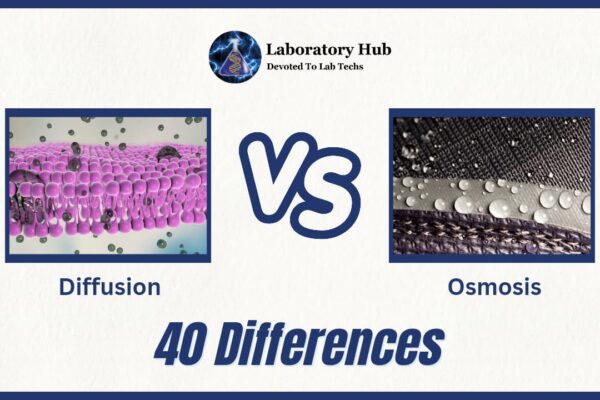48 differences between UTIs and yeast infections
Urinary tract infections (UTIs) and yeast infections, for example, are both prevalent medical disorders that affect many sections of the body.
UTIs (Urinary tract infections)
A urinary tract infection (UTI) is an infection that can occur in any part of the urinary system, including the kidneys, bladder, ureters, and urethra. UTIs are common medical diseases that can affect people of all ages and genders, however they affect women more frequently. UTIs range in intensity from minor discomfort to more serious infections that necessitate medical intervention.
UTIs are primarily caused by bacteria entering and proliferating in the urinary system. Escherichia coli (E. coli), which normally dwells in the intestines but can cause infections if it reaches the urinary tract, is the most frequent form of bacterium that causes UTIs.
UTIs are classified into several kinds based on where the infection occurs:
Cystitis: The most prevalent type of UTI is a bladder infection. It produces symptoms such as frequent urination, urgency, and lower abdominal discomfort.
Pyelonephritis is a severe kidney infection that is more serious than a bladder infection. Fever, chills, nausea, vomiting, and discomfort in the upper back or sides are some of the symptoms.
Urethritis is an infection of the urethra, which is the tube that transports pee from the bladder to the outside of the body. Burning with urination and discharge are symptoms.
Yeast Infection
A yeast infection, also known as candidiasis, is a fungal infection caused by a Candida species fungus overgrowth. Candida is found in small quantities on the skin and in many parts of the body, including the mouth, throat, gut, and vaginal region. However, when the body’s natural microbial habitat is disrupted, Candida can multiply fast and create an infection. Yeast infections are most typically connected with the vaginal region, resulting in vaginal yeast infections in women and, in men, occasionally penile yeast infections.
Candida overgrowth, most often Candida albicans, is the most prevalent cause of yeast infections. A lot of conditions can contribute to yeast infections.
Use of Antibiotics might upset the body’s microbial balance, allowing Candida to thrive more easily.
Changes in hormones, such as those experienced during pregnancy, menstruation, or menopause, might modify the environment and promote yeast growth.
People with compromised immune systems, such as those with HIV/AIDS or those receiving cancer treatment, are more vulnerable to yeast infections. Uncontrolled diabetes can foster an environment conducive to yeast overgrowth.
Poor hygiene, as well as the use of strong soaps and hygiene products in the genital area, can upset the natural balance of bacteria.
Also read: Active Immunity vs Passive Immunity – 26 Key Differences
No. | Aspect | UTI (Urinary Tract Infection) | Yeast Infection |
1 | Affected Area | Urinary tract (bladder, urethra, kidneys) | Vaginal area |
2 | Pathogens | Bacteria (E. coli, etc.) | Fungi (Candida species) |
3 | Symptoms | Frequent, painful urination, cloudy urine | Itching, burning, unusual discharge |
4 | Pain During Urination | Often experienced | Not typically associated with pain |
5 | Odor | Unpleasant odor in urine | May have mild, yeasty odor |
6 | Discharge | Typically minimal or absent | Thick, white, curd-like discharge |
7 | Color of Discharge | Discharge color usually not present | Whitish discharge |
8 | Inflammation | Can cause inflammation in the urinary tract | Local inflammation in the vagina |
9 | Frequency of Infections | Can be recurrent | Can also be recurrent |
10 | Sexual Activity Impact | Pain during sex may occur | Discomfort during sex possible |
11 | Location of Pain | Lower abdomen, pelvic area | Vaginal and external genital area |
12 | Urgency | Frequent urgency to urinate | No increased urgency to urinate |
13 | Blood in Urine | Blood in urine can be present | No blood in vaginal discharge |
14 | Back Pain | Can lead to lower back pain | Not typically associated with back pain |
15 | Fever | Can cause fever | Not typically associated with fever |
16 | Origin of Infection | Often from bacteria entering urethra | Overgrowth of naturally occurring yeast |
17 | Diagnostic Tests | Urinalysis, urine culture | Clinical examination, microscopic analysis |
18 | Sexual Transmission | Generally not sexually transmitted | Not considered a sexually transmitted infection |
19 | Treatments | Antibiotics prescribed by a doctor | Antifungal medications |
20 | Prevention | Proper hygiene, staying hydrated | Avoiding irritants, maintaining good hygiene |
21 | Recurrence Prevention | Drinking water, urinating after sex | Avoiding irritants, managing risk factors |
22 | Menstrual Impact | No direct impact on menstrual cycle | Can be more common during menstruation |
23 | Immune System | UTIs can be more common with immune compromise | Yeast infections may occur with weakened immune system |
24 | Antibiotic Use | UTIs are treated with antibiotics | Yeast infections are treated with antifungal medication |
25 | Burning Sensation | Often experienced during urination | Burning sensation may occur |
26 | Relation to Bubble Bath | Can irritate the urinary tract | Bubble baths can potentially contribute to yeast infections |
27 | Urinary Urgency | Can cause frequent urge to urinate | No increased urgency to urinate |
28 | Transmission to Partner | Not typically transmitted through sexual activity | Not considered a sexually transmitted infection |
29 | Location of Itching | Itching generally absent | Itching is a common symptom |
30 | Perineal Discomfort | Possible perineal discomfort | Possible perineal discomfort |
31 | Causative Organisms | Bacteria, often E. coli | Candida species, commonly Candida albicans |
32 | Risk Factors | Female anatomy, sexual activity | Antibiotic use, weakened immune system |
33 | Vaginal pH Changes | Not directly associated with vaginal pH changes | Yeast overgrowth can be linked to pH changes |
34 | Bacteria in Flora | UTIs are usually caused by external bacteria | Yeast infections involve overgrowth of naturally occurring yeast |
35 | Treatment Duration | Short course of antibiotics | Varies depending on severity |
36 | Yeast Overgrowth Factors | Antibiotics can disrupt vaginal flora and lead to yeast overgrowth | Hormonal changes, immune system disruption can contribute |
37 | Bladder Involvement | Directly affects the bladder | No direct effect on the bladder |
38 | Sexual Pain Mechanism | Pain often related to bladder discomfort | Pain related to irritation and inflammation |
39 | Natural pH Levels | UTIs not typically linked to changes in vaginal pH | Yeast infections can be influenced by pH imbalance |
40 | Sexual Activity Timing | Sexual activity can lead to UTI symptoms | Yeast infections not necessarily linked to sexual activity |
41 | Impact on Daily Activities | Can disrupt daily activities due to pain and discomfort | Can impact daily activities due to discomfort and itching |
42 | Sensitivity to Hygiene Products | UTIs can be triggered by harsh hygiene products | Yeast infections can be triggered by certain hygiene products |
43 | Vaginal Discomfort | Generally not associated with vaginal discomfort | Vaginal discomfort is common |
44 | Medical Intervention | Requires medical evaluation and antibiotics | Medical evaluation and antifungal medication |
45 | Associated Discomfort | Can cause pain and discomfort in lower abdomen | Can cause itching, irritation, and discomfort |
46 | Immune Response Mechanism | Immune response against bacterial invasion | Immune response against fungal overgrowth |
47 | Severity of Symptoms | Symptoms can vary in severity | Symptoms can vary in severity |
48 | Infection Impact on Sex Life | Can impact sexual activity due to discomfort | Can impact sexual activity due to discomfort |
Also read: Innate Immunity vs Adaptive Immunity- 35 Differences
Frequently Asked Questions (FAQS)
A strong, continuous sensation to urinate, a burning sensation during urination, frequent urination, murky or bloody urine, and pain or pressure in the lower abdomen or back are all common symptoms of a UTI.
Women are more susceptible to UTIs because their urethra is shorter, allowing bacteria to enter the bladder more easily. Risk factors include sexual activity, urine retention, menopause, and certain medical problems.
A UTI can be diagnosed by a healthcare practitioner based on symptoms, a physical examination, and a urine sample test to detect the presence of bacteria or white blood cells.
Itching, redness, swelling of the vulva, thick white discharge like cottage cheese, and discomfort during urination or sexual intercourse are all symptoms of a vaginal yeast infection.
Antibiotic usage, hormonal changes, a compromised immune system, uncontrolled diabetes, and poor personal cleanliness are all factors that might contribute to yeast infections.
Antifungal drugs, which can come in the form of creams, suppositories, ointments, or oral tablets, are primarily used to treat yeast infections. Completing the entire course of treatment is critical for successful resolution.







